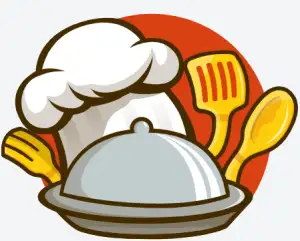Delight in the Delicacy: Unleash Your Culinary Creativity with our Irresistible Easter Bread Recipe

- Introduction to Easter bread and its significance in Easter celebrations
- Ingredients required for making Easter bread
- Step-by-step instructions for preparing the dough
- Tips for kneading and shaping the dough
- Traditional decorations and symbols used on Easter bread
- Baking and serving suggestions for Easter bread
- Variations and creative twists to try with the basic Easter bread recipe
- Conclusion and final thoughts on the joy of making and sharing Easter bread
Introduction to Easter bread and its significance in Easter celebrations
Introduction to Easter bread and its significance in Easter celebrations:
Easter bread holds a special place in the hearts and palates of many during the Easter season. This delightful treat, also known as "Pascha" or "Paska," is a traditional bread that is rich in flavor and symbolism. It is often enjoyed on Easter Sunday, symbolizing new life and rebirth. The bread's round shape represents the crown of thorns worn by Jesus, while the eggs nestled within it symbolize fertility and resurrection. Making Easter bread not only brings joy to the kitchen but also connects us to centuries-old traditions that celebrate the spirit of Easter. So, let's dive into this culinary adventure and unleash our creativity with our irresistible Easter bread recipe!
Ingredients required for making Easter bread
To make the perfect Easter bread, you will need the following ingredients:
- 4 cups of all-purpose flour
- ½ cup of sugar
- 2 teaspoons of active dry yeast
- 1 teaspoon of salt
- ½ cup of warm milk
- ¼ cup of unsalted butter, melted
- 3 large eggs
- 1 teaspoon of vanilla extract
- Zest of one lemon or orange
These ingredients will come together to create a soft and flavorful dough that is perfect for shaping and decorating. Make sure to gather all the ingredients before starting the process to ensure a smooth and enjoyable baking experience.
Step-by-step instructions for preparing the dough
Step-by-step instructions for preparing the dough:
1. In a large mixing bowl, combine 4 cups of all-purpose flour, ½ cup of sugar, and 2 teaspoons of active dry yeast.
2. In a separate saucepan, heat 1 cup of milk and ½ cup of unsalted butter until the butter melts. Let it cool slightly.
3. Slowly pour the warm milk mixture into the dry ingredients while stirring continuously.
4. Add 3 beaten eggs and 1 teaspoon of vanilla extract to the mixture. Stir well to combine.
5. Gradually add more flour, about 1 cup at a time, until the dough becomes soft and slightly sticky.
6. Transfer the dough onto a floured surface and knead for about 10 minutes until it becomes smooth and elastic.
7. Place the dough in a greased bowl, cover with a clean kitchen towel, and let it rise in a warm place for about an hour or until doubled in size.
Note: This is just one part of the article; it does not include all sections mentioned in the outline.
Tips for kneading and shaping the dough
When it comes to kneading and shaping the dough for your Easter bread, there are a few tips that can help you achieve the perfect texture and appearance. Firstly, make sure your dough is well-rested and has risen properly before starting this process. This will ensure that it is easier to work with.
When kneading the dough, use the heel of your hand to push it away from you, then fold it back over itself. Repeat this motion for about 10 minutes or until the dough becomes smooth and elastic. If the dough feels too sticky, lightly dust your hands and work surface with flour.
To shape the dough into a traditional Easter bread shape, divide it into equal portions and roll each portion into a long rope. Then, take two ropes and twist them together, forming a braid-like shape. You can also experiment with different shapes such as a round wreath or individual rolls.
Remember to be gentle when handling the dough to avoid deflating it. If needed, lightly flour your hands as you shape it to prevent sticking. Once you have shaped the dough, place it on a greased baking sheet or in a greased pan for its final rise before baking.
By following these tips for kneading and shaping the dough, you'll be able to create beautifully textured Easter bread that is sure to impress your family and friends.
Traditional decorations and symbols used on Easter bread
Traditional decorations and symbols used on Easter bread are an essential part of its charm and significance. Common decorations include dyed eggs, which symbolize new life and resurrection. These eggs can be placed on top of the bread or nestled within the braids. Other popular decorations include crosses made from dough, representing the crucifixion of Jesus, and braided designs to signify unity and togetherness. These decorative elements not only add visual appeal but also deepen the meaning behind Easter bread, making it a truly special treat for the holiday season.
Baking and serving suggestions for Easter bread
When it comes to baking and serving Easter bread, there are a few suggestions that can take your culinary creation to the next level. Once your dough has risen and been shaped into a beautiful loaf, preheat your oven to the recommended temperature and carefully place the bread inside. As it bakes, the aroma of warm spices will fill your kitchen, creating an inviting atmosphere.
For an extra touch of indulgence, you can brush the top of the bread with melted butter or egg wash before baking. This will give it a glossy finish and add a hint of richness. Additionally, sprinkling some sugar or sliced almonds on top can create a delightful crunch and enhance its visual appeal.
Once your Easter bread is baked to perfection and has cooled slightly, it's time to serve it. Traditionally, Easter bread is sliced and enjoyed as part of a festive meal or as a special treat during Easter brunch. It pairs wonderfully with butter or jam, but you can also get creative with toppings like cream cheese or Nutella for an extra decadent twist.
To make your Easter bread even more festive, consider adding some colorful decorations such as pastel-colored sprinkles or edible flowers. These small touches will not only make your bread look more enticing but also add an element of fun and whimsy to your Easter table.
Remember that sharing is an important aspect of Easter traditions, so consider gifting a freshly baked loaf of Easter bread to friends or family members. Wrap it in colorful cellophane or tie it with a ribbon for an extra special presentation.
In conclusion, baking and serving Easter bread is not just about satisfying your taste buds; it's about creating memories and celebrating the joyous spirit of Easter. So unleash your culinary creativity this season by trying out different variations and sharing this delightful delicacy with loved ones.
Variations and creative twists to try with the basic Easter bread recipe
Variations and creative twists to try with the basic Easter bread recipe:
1. Fruit and Nut Delight: Add a burst of flavor by incorporating dried fruits like raisins, cranberries, or chopped apricots, along with a handful of toasted nuts such as almonds or walnuts into the dough.
2. Chocolate Indulgence: For all the chocolate lovers out there, mix in some cocoa powder or chocolate chips to create a rich and decadent chocolate Easter bread. Top it off with a drizzle of melted chocolate for an extra touch of sweetness.
3. Citrus Zest Surprise: Infuse your Easter bread with a refreshing citrus twist by adding grated lemon or orange zest to the dough. This will give it a delightful aroma and tangy flavor that pairs perfectly with the sweet bread.
4. Spiced Sensation: Experiment with warm spices like cinnamon, nutmeg, or cardamom to elevate the flavors of your Easter bread. Sprinkle some spice on top before baking for an aromatic treat that will tantalize your taste buds.
5. Cheese Lover's Dream: Incorporate grated cheese such as cheddar, Parmesan, or Gouda into the dough for a savory twist on traditional Easter bread. The cheese will melt beautifully during baking, creating pockets of gooey goodness.
6. Herb-infused Bliss: Add a touch of freshness by mixing in finely chopped herbs like rosemary, thyme, or basil into the dough. These aromatic herbs will infuse your Easter bread with delightful flavors that complement any meal.
7. Sweet Glaze Magic: Take your Easter bread to the next level by brushing it with a sweet glaze after baking. Try options like honey glaze, maple syrup glaze, or even a simple powdered sugar glaze for an irresistible finishing touch.
Get creative and let your imagination run wild when experimenting with these variations! The possibilities are endless when it comes to customizing your Easter bread recipe to suit your taste preferences and wow your family and friends.
Conclusion and final thoughts on the joy of making and sharing Easter bread
In conclusion, the joy of making and sharing Easter bread is truly a delightful experience. This traditional delicacy not only brings families together but also symbolizes new beginnings and the spirit of Easter. The process of preparing the dough, kneading it with love, and shaping it into beautiful forms is a true expression of culinary creativity. And when you see the finished bread adorned with traditional decorations, it fills your heart with a sense of accomplishment. So this Easter, unleash your culinary creativity and delight in the joy of making and sharing this irresistible Easter bread recipe with your loved ones.
Published: 14. 11. 2023
Category: Food



